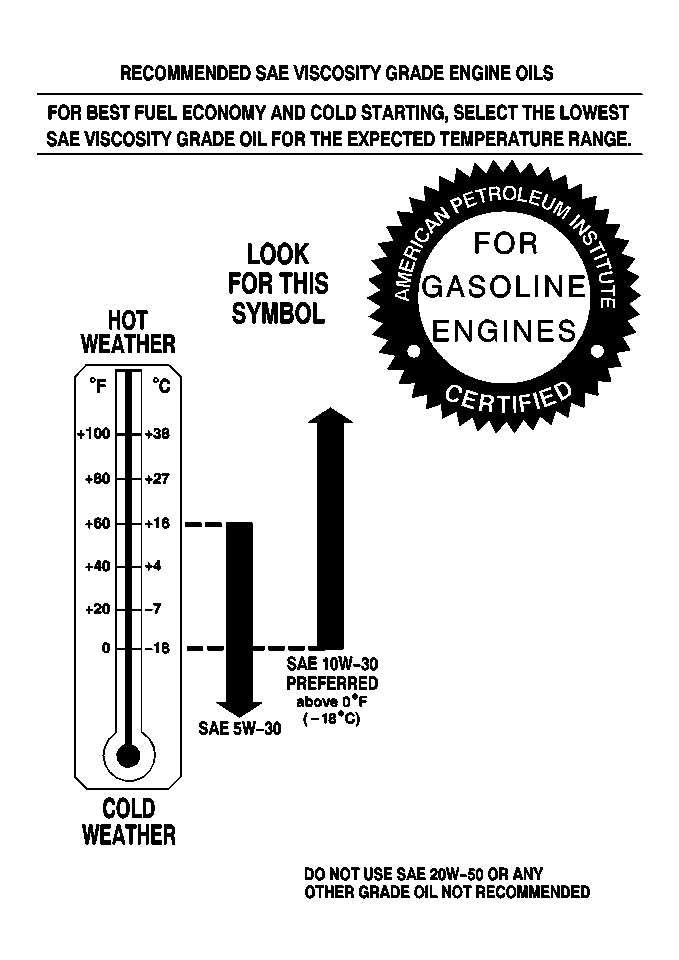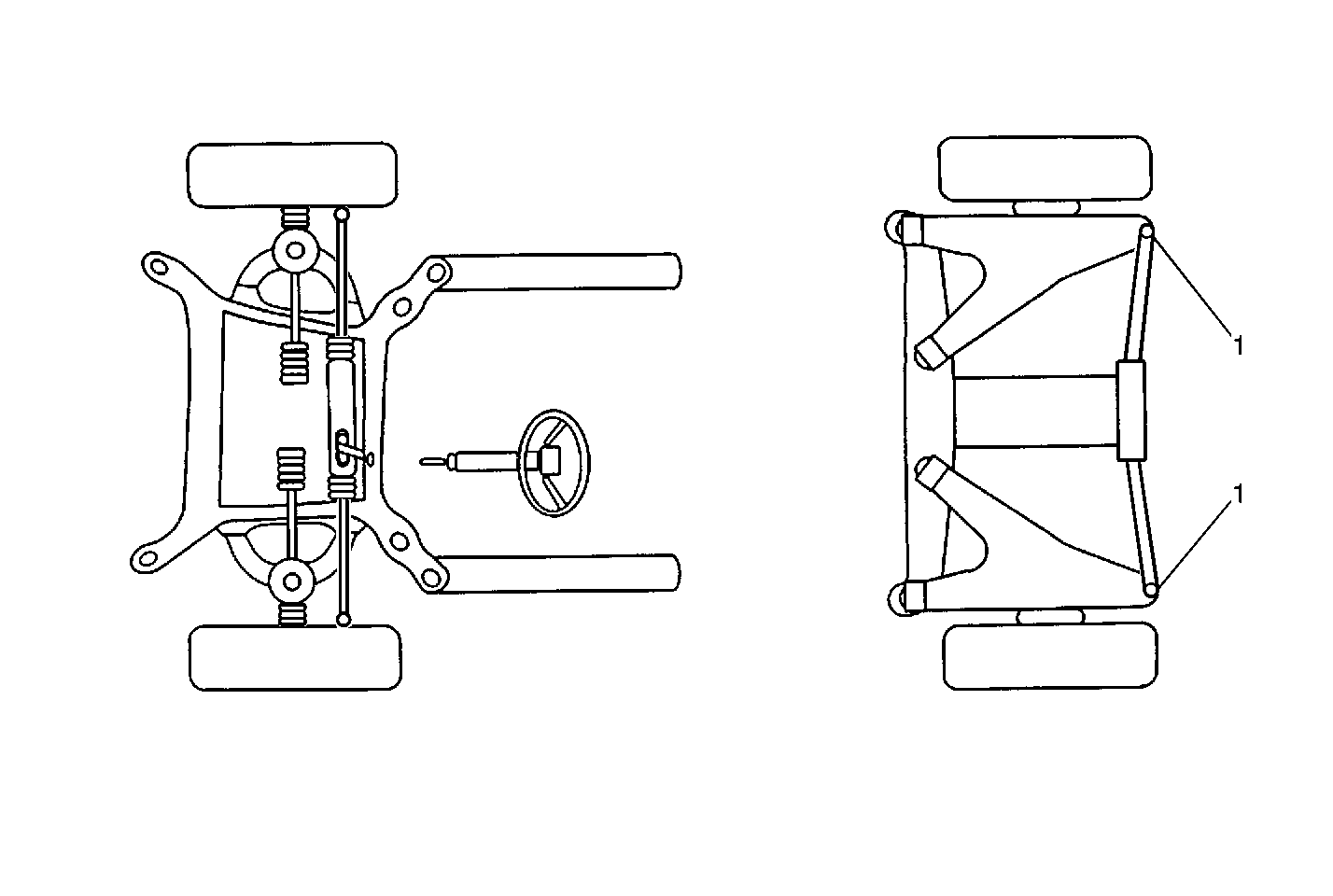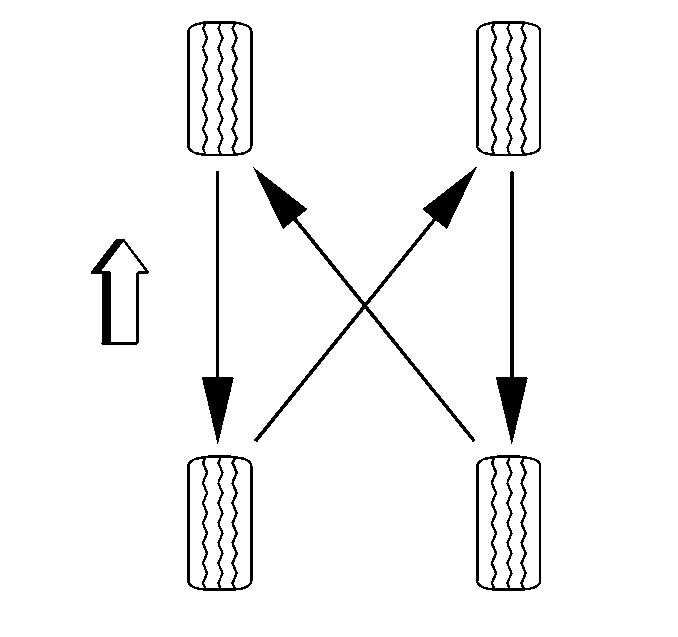The following text and illustrations describe the details of the required scheduled maintenance services.
For time and/or mileage intervals of scheduled maintenance items, refer to Maintenance Schedule .
For information on the proper fluids and lubricants to use, refer to Fluid and Lubricant Recommendations .
Engine Oil and Filter Change
Change both the engine oil and the filter according to the maintenance schedule intervals.
For time and/or mileage intervals of scheduled maintenance items, refer to Maintenance Schedule .
Engine Oil Quality
Oils recommended for the vehicle can be identified by looking for the STARBURST symbol. This symbol indicates that the oil has been certified by the American Petroleum Institute (API).

Engine Oil Viscosity
Notice: Using oils of any viscosity other than those recommended could result in engine damage. When choosing an oil, consider the range of temperatures the vehicle will be operated in before the next oil change. Then, select the recommended oil viscosity.
The recommended oil viscosity for all vehicles when the temperature is above 0°F (-18°C) is SAE 10W-30.
Engine oil viscosity (thickness) has an effect on the fuel economy and the cold-weather operation (starting and oil flow). Lower viscosity engine oils can provide better fuel economy and cold-weather performance. However, higher temperature weather condition require higher viscosity engine oils for satisfactory lubrication. When the temperature will be very cold and never above 60°F (16°C), SAE 5W-30 should be used in all models. If the vehicle will be in an area where the temperature falls below -20°F (-29°C), consider using either an SAE 5W-30 synthetic oil or an SAE 0W-30 oil. Both will provide easier cold starting and better protection for your engine at extremely low temperatures. Do not use other viscosity oils, such as SAE 20W-50.
Chassis Lubrication
Notice: Do not lubricate the parking brake cables. Lubrication destroys the plastic coating on the cable.
Lubricate the transaxle shift linkage. Lubricate the parking brake guides, underbody contact points and linkage.
Important: Wipe off all dirt from the grease fitting before lubricating the joint. Ball joints should not be lubricated unless their temperature is -12°C (10°F) or higher. During cold weather, the ball joint should be allowed to warm up as necessary before being lubricated. Use a low-pressure grease gun on all joints to prevent seal damage.
Apply grease slowly to the rear tie rod ends (1) while watching the grease seal. Apply grease until grease is seen bleeding from the seal. If the seal expands but no grease is seen, do not apply any more grease and allow time for the grease to bleed from the seal.

Tire and Wheel Inspection and Rotation

Check the tires for abnormal wear or damage. Rotate the tires to equalize the wear and obtain maximum tire life.
Accessory Drive Belt Inspection
Inspect the accessory drive belts for the following:
| • | Cracks |
| • | Fraying |
| • | Wear |
| • | Proper tension |
Replace accessory drive belt as needed. (Belts can have many small cracks in individual ribs without affecting the performance.)
Transmission Service
Change both the fluid and the filter according to the maintenance schedule intervals.
For time and/or mileage intervals of scheduled maintenance items, refer to Maintenance Schedule
For information on the proper fluids and lubricants to use, refer to Fluid and Lubricant Recommendations .
Spark Plug Replacement
Replace the spark plugs according to the maintenance schedule intervals.
For time and/or mileage intervals of scheduled maintenance items, refer to Maintenance Schedule .
Spark Plug Wire Inspection
Clean the spark plug wires and inspect for burns, cracks or other damage. Check the wire boot fit at the coils and at the spark plugs. Replace spark plug wires as needed.
Air Cleaner Filter Replacement
Replace the air cleaner filter according to the maintenance schedule intervals.
For time and/or mileage intervals of scheduled maintenance items, refer to Maintenance Schedule .
Fuel Tanks, Cap and Lines Inspection
Inspect the following components for damage or leaks:
| • | The fuel tank |
| • | The fuel cap |
| • | The fuel lines |
| • | The fuel rails |
| • | The fuel injection assemblies |
Inspect the fuel cap gasket for an even filler neck imprint and any damage. Replace parts as needed.
Periodic replacement of the fuel filter is not required.
